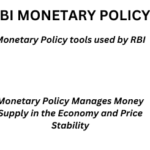Indian Meteorological Department Predicts Relentless Sweltering Summer

According to the Indian Meteorological Department (IMD), India could experience heat waves from March to May, which would be 3 to 5 degrees above normal.
Barring parts of the northwest and peninsular region, most of India is expected to experience above-normal maximum temperatures from April to June.Last year, in 2024, India had one of its hottest summers in 14 years. There were 536 days of heat waves across the country
Normal 0 false false false EN-IN X-NONE PA
LEARNING FROM HOME/WITHOUT CLASSES/BASICS
Qualitatively, heatwave is a condition of air temperature that becomes fatal to human body when exposed. Quantitatively, it is defined based on the temperature thresholds over a region in terms of actual temperature or its departure from normal. The Indian Meteorological Department (IMD) has given the following criteria for Heat Waves.
Heat Wave need not be considered till the maximum temperature of a station reaches at least 40°C for Plains and at least 30°C for Hilly regions.
When the normal maximum temperature of a station is less than or equal to 40°C Heat Wave Departure from normal is 5°C to 6°C. Severe Heat Wave Departure from normal is 7°C or more.
When the normal maximum temperature of a station is more than 40°C Heat Wave Departure from normal is 4°C to 5°C Severe Heat Wave Departure from normal is 6°C or more
When the actual maximum temperature remains 45°C or more irrespective of the normal maximum temperature, heat waves should be declared.
IMD issues warnings in colour code,Green,Yellow,Orange and Red as per the conditions of Heat wave conditions prevailing in the Country.
|
WARNING |
IMPACT |
SUGGESTED ACTION |
|
Nil |
Comfortable Temperature |
No cautionary required |
|
Heat wave conditions at |
Heat is tolerable for |
Avoid heat exposure |
|
Severe heat wave conditions |
Increased likelihood of heat |
Avoid heat exposure– keep |
|
Severe heat wave likely to |
Very high likelihood of |
Extreme care needed for |
INDIA METEOROLOGICAL DEPARTMENT works under the Ministry of Earth Sciences.
In the year 1875, the Government of India established the India Meteorological Department, bringing all meteorological work in the country under a central authority. Mr. H. F. Blanford was appointed Meteorological Reporter to the Government of India. The first Director General of Observatories was Sir John Eliot who was appointed in May 1889 at Calcutta headquarters. The headquarters of IMD were later shifted to Shimla, then to Poona (now Pune) and finally to New Delhi.Dr. Mrutyunjay Mohapatra is the current Director General of INDIA METEOROLOGICAL DEPARTMENT .
ANTHROPOGENIC CLIMATE CHANGE is a change caused by human activity.
CLIMATE CHANGE:
Climate Change refers to any change in climate over time whether due to natural variability or as a result of human activity.
Global warming is the long-term heating of Earth’s climate system observed since the pre-industrial period (between 1850 and 1900) due to human activities, primarily fossil fuel burning, which increases heat-trapping greenhouse gas levels in Earth’s atmosphere. The term is frequently used interchangeably with the term climate change, though the latter refers to both human- and naturally produced warming and the effects it has on our planet.
Greenhouse gases allow sunlight (shortwave radiation) to
pass through the atmosphere freely, where it is then partially absorbed by the surface of the Earth. Greenhouse gases are able to trap heat (longwave radiation) in the atmosphere, keeping the Earth’s surface warmer than it would be if they were not present. These gases are the fundamental cause of the greenhouse effect. Increases in the number of greenhouse gases in the atmosphere enhances the greenhouse effect which is creating global warming and consequently climate change.
So the more greenhouse gases you have in the atmosphere, the more heat stays on Earth. The principal forcing greenhouse gases are:
Carbon dioxide (CO2); Methane (CH4); Nitrous oxide (N2O); Fluorinated gases







0 Comments